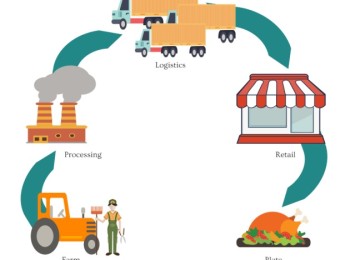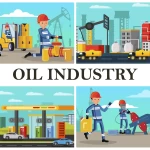Course Summary
The global food systems are constantly evolving, and this is causing the global supply chains to evolve alongside them. Organisations involved in the agribusiness must understand the necessary changes that need to be made to continue to be able to stay afloat within the market and meet customer demands.
There are a vast number of factors that influence the function of supply chains, both internally and externally. To maintain efficiency, organisations need to continuously assess the value chain within their supply chains, and ensure each component is adding value to their service. It’s crucial to maintain positive relationships throughout the industry to ensure effective communication and processes continue.
To identify how to best meet the demands of the customer, the organisation needs to measure and evaluate current market demands and align their services to meet this. Furthermore, it is necessary to be capable of accurately predicting future market changes and ensure that all products and services are appropriate.
- To understand the vitality of the agriculture industry.
- To identify the importance of the value chain.
- To explain the process of the value chain.
- To improve the efficiency of value chain processes.
- To evaluate the risks associated with the global food systems.
- To effectively meet consumer demands.
- To analyse the market trends and utilise methods to predict future changes.
- To assess and implement the most effective industry standards.
- To utilise various methods of evaluating risks to maintain proficient working practices.
- To efficiently identify and reduce non-value adding activities.
This course is designed for anyone with the responsibility of maintaining supply chains or customer relations within the agricultural industry. It would be most beneficial for:
- Supply Chain Managers
- Sales/Marketing Directors
- Planning Managers
- Project Managers
- Purchasing Agents
- Agricultural Engineer
- Warehouse Managers
- Operations Managers
This course uses a variety of adult learning styles to aid full understanding and comprehension. Participants will review real-world examples of supply chains to highlight areas of value and factors that influenced the value chain.
They will be provided with the necessary tools to complete the given learning exercises. Combined with presentations, discussions and group activities, participants will have ample opportunities to develop their knowledge and gain a full comprehensive understanding of the taught content. Through various practical activities, they will be able to create their own risk management plans based on their specific role within the value chain.
Course Content & Outline
- Define what agribusiness is and identify types of organisations involved.
- Assess internal and external factors that influence global supply chains.
- Understand how market trends impact industry standards.
- The impact of climate change and how it has altered agribusiness practices.
- The corporate social responsibility for sustainability.
- The vitality of understanding customer needs.
- Utilising various methods to measure and track customer demands.
- Modifying products and services to better meet demands.
- Analysing what influences market trends and customer wants.
- Conducting agricultural marketing.
- Methods of predicting market trends and preparing for them.
- Assessing whether it’s more cost effective to out-source resources or produce them internally.
- Establishing relationships throughout the supply chain.
- Creating detailed plans on the supply process, including resources, costs, and transport methods.
- Analysing current storage facilities and ensuring full warehouse access.
- Managing distribution and transport externally and internally.
- Defining risk management.
- Identifying risks using different methods and techniques.
- Quantifying risks and prioritising high and low risks.
- Creating clear and concise risk management plans.
- Ensuring risk management encompasses all areas of risk – financial, legal, operation and reputation.
- Implementing preventatives to minimise risks.
- Effectively balancing quality with operational efficiency.
- Maintaining relationships throughout the supply chain to better guarantee value chain control.
- Ensuring all quality is equal to the value chain.
- How to increase value throughout the existing value chain.
- Striving for continuous improvement.
- The importance of measuring performance.
- Methods of measuring performance.












